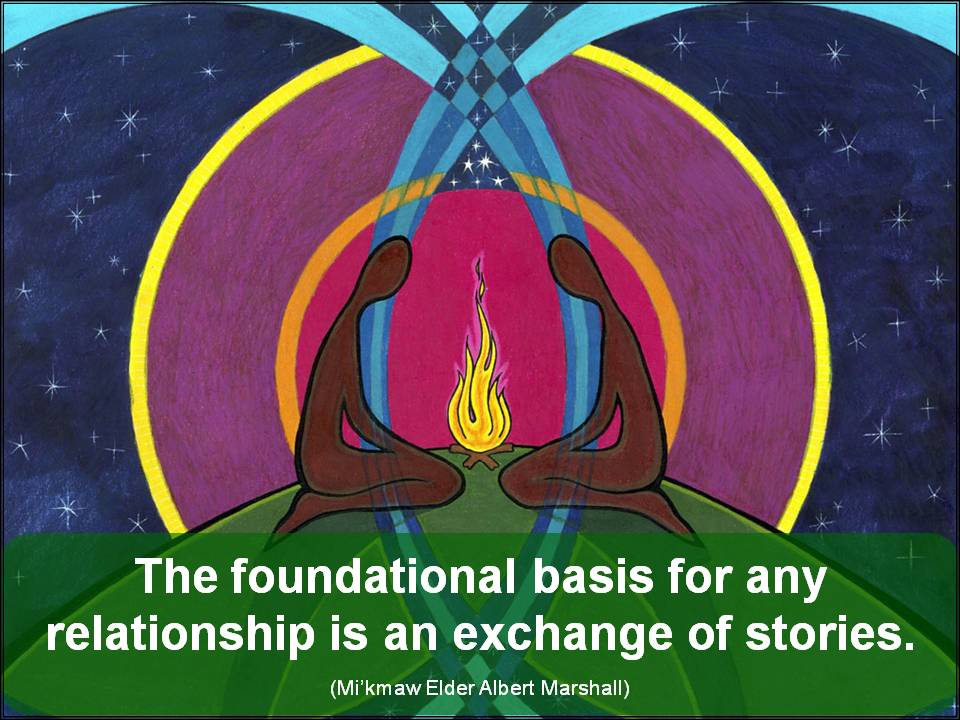Exchange of Stories
 Exchange of stories is the foundational basis for any and all relationships. This statement as a Guiding Principle has long been encouraged within the Integrative Science journey by Mi'kmaw Elder Albert Marshall.
Exchange of stories is the foundational basis for any and all relationships. This statement as a Guiding Principle has long been encouraged within the Integrative Science journey by Mi'kmaw Elder Albert Marshall.
In Integrative Science, understanding and using this Guiding Principle is very appropriate because our journey sprang from a vision for relationship, one in which there would be a "bringing together of the scientific knowledges and ways of knowing from Indigenous and Western worldviews."
In Integrative Science, we are exploring "story as relationship" within research projects. Some of our major interests in this regard are to help humans reconnect with the natural world and to help Aboriginal Elders revitalize language while also connecting with children and young people in their communities.
Read more about our Integrative Science research to explore story.
Also, check out this draft chapter for a forthcoming book where we explain the use of story within our co-learning journey of Integrative Science and Two-Eyed Seeing.
Our interests in "story as relationship" sit comfortably with the thoughts of Gregory Bateson (1979, p. 13) as highlighted by Goodwin (2008, p. 149): "Now I want to show you that whatever the word "story" means …, the fact of thinking in terms of stories does not isolate human beings as something separate from the starfish and the sea anemones, the coconut palms and the primroses. Rather, if the world be connected, if I am at all fundamentally right in what I am saying, then thinking in terms of stories must be shared by all mind or minds whether ours or those of redwood forests and sea anemones."
References in above:
Bateson, G. 1979. Mind and nature, a necessary unity. New York, NY: E.P. Dutton.
Goodwin, B. 2008. Bateson: Biology with meaning. In J. Hoffmeyer (ed), A legacy for living systems; Gregory Bateson as precursor to biosemiotics. (pp. 145-152). Biosemiotics 2: Springer (book series).
